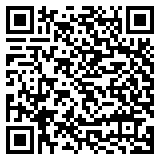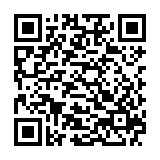Financial terminology is fundamentally confusing to non-experts. Unfortunately, for legal and medical professionals, there’s a need to manage money matters regularly, even if this isn’t their main specialty. The volume of jargon can lead to misunderstandings or missteps. Contracts, invoices, and budgets don’t always align when technical vocabularies clash. So what are the specific challenges that matter most, and how do professionals handle them? Stick around to find out more about the 101 of translating financial jargon.
How Financial Jargon Creates Miscommunication in Specialized Fields
The biggest obstacle of financial language is that it often assumes a level of familiarity with technical terms that not everyone has. This means it can be precise and impenetrable at the same time.
Common roadblocks that medical and legal pros may encounter include the following:
- Terms like amortization or liquidity may lack immediate context.
- Cross-disciplinary documents might use conflicting definitions of similar words.
- Industry-specific phrases can lead to assumptions that don’t apply universally.
Misunderstandings waste time and create real risks. Poorly interpreted contracts or healthcare billing errors could affect patient trust. Moreover, the collective cost of imperfect info hurts organizations to the tune of over $3 trillion annually.
The challenge is to combine knowledge, interpretation and effective translation to ensure the right meaning carries over when contexts differ dramatically between industries.
Breaking Down Overlaps Between Finance and Law
Finance and law often intersect in areas like contracts, settlements, or compliance. While these overlaps are unavoidable, the differences in language between fields can create confusion.
Key overlapping areas include:
- Contracts that blend legal terms with financial calculations.
- Compliance documents require both legal interpretation and fiscal understanding.
- Settlement agreements involving complex compensation structures.
For example, lawyers may focus on legal protections in a contract, while accountants prioritize cost breakdowns. This misalignment can lead to disputes or errors during implementation.
To address this gap, professionals from each side should collaborate early on when drafting shared documents. Using plain language wherever possible also ensures everyone understands what’s being communicated.
Why Medical Professionals Struggle with Complex Billing Terms
Medical professionals face financial language daily in areas like patient billing, insurance claims, and vendor payments. The challenge is these terms are often far removed from their core expertise.
Frequent pain points include:
- Insurance policies using dense financial jargon.
- Hospital invoices relying on coding systems unfamiliar to many doctors.
- Payment structures combining healthcare procedures with complex cost allocations.
For instance, a doctor may understand treatment codes but feel lost when encountering terms like deductible limits or reimbursement schedules. This disconnect risks delays in processing payments or disputes over costs. One study found 80% of medical bills contain slip-ups of some kind, so it’s a common conundrum.
Clear communication tools, such as simplified templates and software solutions tailored for healthcare, can streamline financial discussions to ease the burden.
The Role of Technology in Bridging Terminology Gaps
Technology offers practical solutions to help professionals consistently cope with financial jargon. Automated tools and templates can simplify communication across fields.
There are various options out there, such as:
- Software that translates complex financial terms into plain language.
- Tools like accounting apps that flag inconsistencies or errors in shared documents.
- Using a Google Docs invoice template to standardize billing formats, making them more accessible.
For example, customizable templates reduce the need for specialized knowledge by providing ready-to-use structures. Cloud-based platforms also make it easier to collaborate on contracts or invoices without needing expertise in multiple disciplines.
These tools save time and reduce misunderstandings, allowing professionals to focus more on their primary work instead of struggling with terminology barriers.
Training and Resources to Decode Financial Language Effectively
Targeted training can help professionals in the legal and medical fields better understand financial jargon. Using practical resources also ensures clarity when handling complex terms.
Helpful strategies include:
- Workshops focused on financial basics tailored for specific industries.
- Online courses that break down advanced concepts into understandable modules.
- Collaborating with financial experts who can clarify terminology during critical discussions.
Accessible resources are equally important. Organizations in these sectors must offer:
- Glossaries designed for cross-industry use that explain shared but confusing terms like interest rates or cost-benefit analysis clearly.
- Standardized templates, especially in billing or contracting, that limit potential misinterpretations through consistent formatting and phrasing.
- Easy-to-navigate digital guides offering real-world examples of how finance integrates with law or healthcare.
For instance, a healthcare provider could use industry-specific courses covering billing practices alongside user-friendly templates to avoid errors when working on patient invoices.
On top of all this, investing in these tools builds confidence by making processes less unwieldy, particularly in disciplines that require collaboration between specialists who may lack overlapping expertise.
The Bottom Line
It’s clear that financial jargon doesn’t have to remain an insurmountable challenge for legal and medical professionals. With the right tools, clear templates, and collaborative efforts, it’s possible to simplify these complex terms across disciplines.
Whether leveraging technology or seeking targeted training, there are practical ways to bridge these gaps. Focusing on clarity and accessibility means professionals can ensure that financial language supports their work rather than creating barriers in critical processes like billing or contracting.





0 Comments